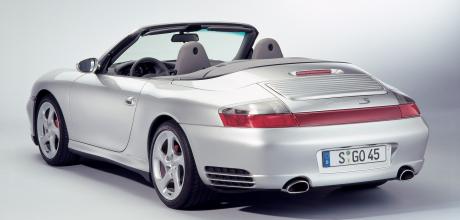Discover how Porsche Side Impact Protection was developed, and how it keeps you safe

Safety has always been a concern at Porsche, and throughout the 911 development various ideas have been introduced to keep occupants safe while maximising driver enjoyment. The three-part safety steering system and Targa roll bar are both examples of Porsche’s safety-derived developments, but legislation also has played a part, like the impact bumper.
Technology explained
More recently as crash protection laws developed, so did requirements for passenger safety. Airbags first appeared on 911s in the US 1990 model year, but they ultimately gave way to the development of Porsche Side Impact Protection (POSIP) in 1999. You might not know the acronym, but you’ll have seen it if you look in the middle of the door trim on a 996 or later 911.
In 1990 an advanced engineering project began to investigate extra occupant protection systems, such as side airbags or padding, with the aim of protecting an occupant’s head and thorax in the event of a side impact. In April 1997, the first POSIP system was fitted to a production car, but the first 911 featuring POSIP appeared in 1998: the 996.
You’d be forgiven for not noticing POSIP, but look on the inside of either door, just aft of the release handle and you’ll notice a lozenge-shaped trim, discretely marked AIRBAG. That hinged cover is all you’ll see of it, unless you trigger it in an accident. The anonymous-looking cover hides a tear seam, and behind it sits a larger-than-usual 30-litre airbag, folded and rolled, with retaining straps for controlled deployment. In the event of an impact, triggers on the centre tunnel and door sills activate the airbag once the impact passes a given threshold. Triggering takes just 5ms. The airbag then inflates with argon and helium, reaching the occupant’s shoulder between 8 and 9ms after triggering, and on to full head height in 15 to 18ms. Thus inflated, the airbag becomes a large, flat cushion between the occupant and inner door.
Regardless of roof configuration or seat position, POSIP is designed to protect the occupant’s chest and head, even in an open cabriolet. Unlike conventional airbags, they remain inflated after being deployed. POSIP was developed in the 997 to be two airbags each side: an 8-litre thorax airbag in the front seats, and another 8-litre airbag in the upper door trim.
Like so many car safety systems, we hope to never need them, but it’s reassuring to know that Porsche’s engineers have been on top of passenger protection for 30 years.

